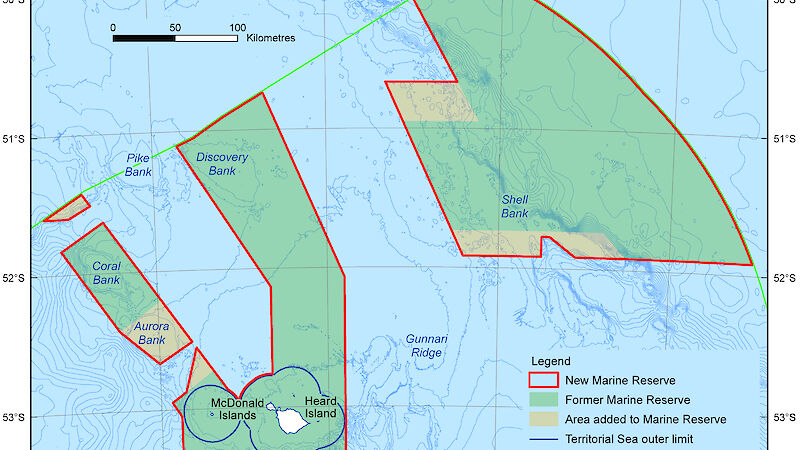The boundaries of the subantarctic Heard Island and McDonald Islands Marine Reserve have been expanded.
The Federal Minister for the Environment, Mr Greg Hunt MP, publically announced the expansion following the implementation of the Environment Protection and Biodiversity Conservation Amendment (Heard Island and McDonald Islands) Proclamation 2014 on 28 March.
The Australian Government’s decision to expand the Commonwealth’s largest IUCN 1a Strict Nature Reserve* follows a comprehensive scientific assessment of the region’s conservation values and ongoing consultation with key stakeholders (including fishing operators, conservation organisations and Australian Government agencies).
An extensive program of benthic (sea floor) sampling was undertaken to facilitate the scientific assessment. It located a range of distinct benthic habitats and a variety of vulnerable benthic species (including corals, sponges and bryozoans) of conservation significance.
The scientific assessment recommended that 6200 square kilometres of ocean should be added to the Reserve on the basis of its high conservation values. These values include outstanding and representative ecosystems, distinct benthic habitats and species, and foraging grounds for seabirds and mammals. The Reserve is now some 71 000 square kilometres in area.
The Reserve is located 4100km south-west of Perth, Western Australia, in the southern Indian Ocean. It encompasses the World Heritage listed Heard Island and McDonald Islands, which were inscribed on the World Heritage List in December 1997 on the basis of their outstanding universal natural values.
Heard Island and the McDonald Islands possess the Commonwealth’s only active volcanoes. Heard Island’s Mawson Peak — standing 2745m above sea level — is the highest point in the Commonwealth outside of the Australian Antarctic Territory.
The Australian Government’s decision to protect this 6200 square kilometres portion of high conservation value ocean within an IUCN 1a Strict Nature Reserve reflects an ongoing commitment to the sustainable management of Australia’s ocean resources.
* IUCN Category 1a Strict Nature Reserves are designated to protect habitats, ecosystems and native species in an as undisturbed state as possible. Public access is primarily limited to scientific research and environmental monitoring. It is the highest level of protection afforded under the IUCN principles.
James Fleming
Senior Policy Officer, Australian Antarctic Division

